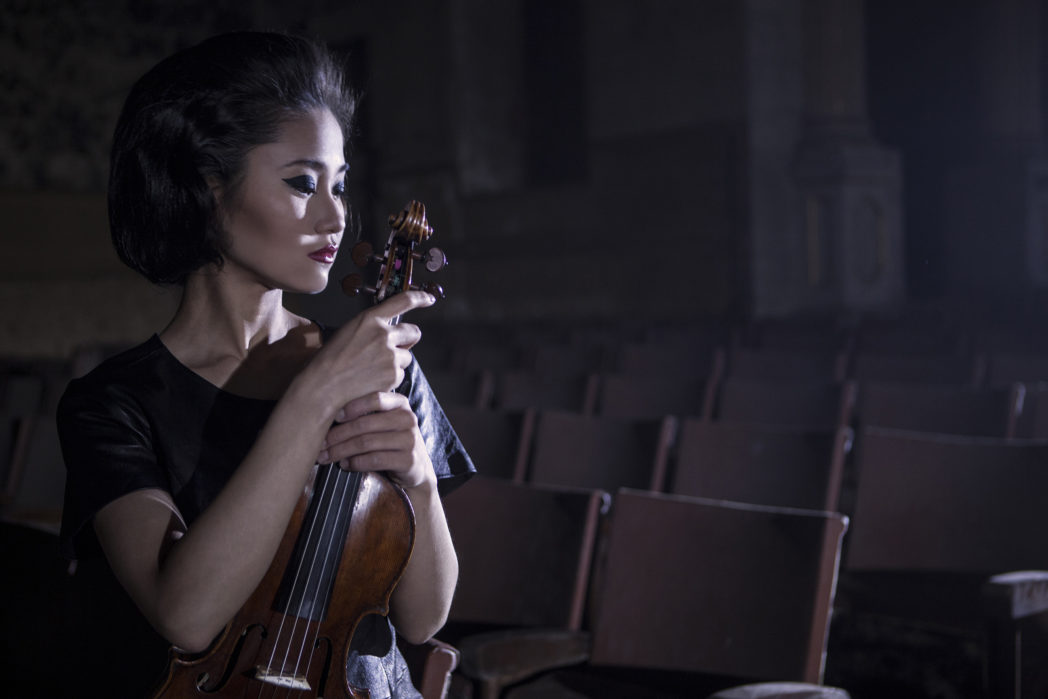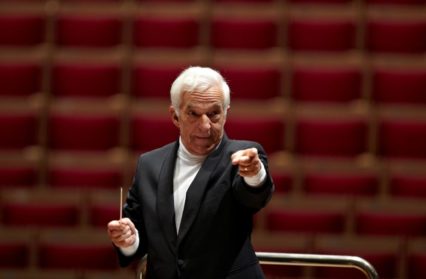Nigel Jarrett was at St David’s Hall, Cardiff, to hear Vladimir Ashkenazy and the Philharmonia Orchestra perform Sibelius and Brahms.
Vladimir Ashkenazy and the Philharmonia Orchestra have been together for decades. He’s almost twenty years into his conductor-laureateship and the connection goes back even farther, to the time when he was one of the world’s greatest pianists. Moreover, he has enjoyed a forty-year association with the Decca recording company as both pianist and conductor. In the latter guise he’s almost as revered as he was as a pianist. With Decca and the Philharmonia he recorded all the Sibelius symphonies between 1979 and 1984, so any performance by the team of any one of them today is an event. Of course, it’s a different Ashkenazy and a different Philharmonia, the former older and wiser – but no less sprightly – the latter replete with new faces but still maintaining the orchestra’s aristocratic status.
A conductor’s frequent appearances with an orchestra might raise the possibility of routine performance. We never get that with Ashkenazy and the Philharmonia. The sheer lustre of sound and almost geographical panorama he drew from his musicians for the Sibelius Second Symphony at this concert were breathtaking. Very much a mercurial, impish figure, he must feel at home with what appears to be a symphony of fragments while knowing that it’s his job to make sense of them and their inter-relationships. But Ashkenazy is wedded to the Romantic repertory, and the symphony is lyrical romanticism at its most unpredicated, the fragmentation seeming to allude to excitable states that constantly give way to each other. He allowed the orchestra to dwell on these for their own sake with tempi that permitted no urging. Throughout, but having convincingly joined up the bits and snatches of the first movement , he made sure that salient points were heard: that bassoon (Meyrick Alexander) in the slow movement, for example, which seems to be finally delivering what was hitherto lacking in terms of a melody but turns out to be nothing more or less than further slivers and shards. He urged the orchestra on in its attempts to create a whole out of the parts, only to be subverted by even more motivic fragments. In other words, he was alert to the music’s contradictions.

Photo Credit: Formento & Formento
Things are slow to get going in the Scherzo, too, where the development might lead the listener to expect a fully-blown tune; instead, the oboe (Tim Rundle) knocks out a repeated note. The development might have formally concluded and therefore allowed for a pause between scherzo and finale but again Sibelius undermines it. When melody does assert itself completely in the latter it is not a melody as we know it but a further series of repetitions. The big climactic moment came at us like a tidal wave, as though Ashkenazy wanted it to stand for the preceding discontinuity, in which any wave hit the groins, as it were. It was stirring stuff and a conclusion as perhaps only an orchestra and a conductor familiar with the work’s structural oddities could have argued convincingly, having been at such pains to make the odd sound as though it wanted to be no such thing.
The Sibelius is a big work and required a full platform, more than was needed for the pre-interval performance of the Brahms Violin Concerto, in which the soloist was the Japanese violinist Sayaka Shoji. She’s a busy musician. Her career set off following victory twenty years ago in the Paganini competition. She was its youngest winner and the first from Japan. Her Brahms is a refined, almost private, utterance, a fact that often contradicted the big orchestral sounds demanded by the score but not everywhere unleashed by Ashkenazy. The concerto was once deemed unplayable, a mark not so much of how more capable concert violinists are today but of how its difficulty so often forces soloists in on themselves as part of the procedure of mastering it. That long orchestral introduction requires the violin to make a big statement at its eventual entry, and it was here that we knew what kind of fist Shoji was going to make of her part in the proceedings. It was a calm, almost disdainful, quasi-cadenza, but in fairness she did get to the melody proper with some ecstatic high-register stopping.
Shoji’s almost self-effacing approach was at home in the second movement, in which the violin is carried along by the orchestra as a kind of commentator. Here Ashkenazy subdued his forces so that they did not become over-arching or oppressive, allowing those sections carrying the burden enough prominence to make their points. After this, one might have expected Shoji to be out-gunned in the final gypsy-rondo – the whole work is something of a competition – but she was back to the start each time with gusto, and soon achieved parity as the main theme was shared. It takes sensitivity on the part of the conductor to make sure in the competitiveness that soloists of differing character are not at a disadvantage from the beginning. Such concern, if it did exist here, was maybe what robbed the performance of a bigger dimension; but there’s more than one way of performing the work and there are enough more fibrous interpretations on record to understand what’s at stake for conductor, orchestra, and soloist. Each interpretation has its place and brings something different.
Philharmonia Orchestra
Sayaka Shoji (violin)
Brahms: Violin Concerto in D
Sibelius: Symphony No.2 in D
Conductor: Vladimir Ashkenazy
You might also like…
Nigel Jarrett was on hand at St David’s Hall to take in a performance of Gustav Mahler’s Symphony No. 3 in D Minor by the Prague Symphony Orchestra.
Nigel Jarrett is a former daily-newspaperman. He is a winner of the Rhys Davies prize and the Templar Shorts award for short stories, and is represented in the Library of Wales’s anthology of 20th–and 21st-century short fiction. He’s also written a poetry collection, a novel, and two volumes of stories. Among others, he writes for Acumen poetry magazine, Jazz Journal, and on music and other subjects for the Wales Arts Review. His pamphlet of stories, A Gloucester Trilogy, has just been published by Templar Press.



 Enjoyed this article? Support our writers directly by buying them a coffee and clicking this link.
Enjoyed this article? Support our writers directly by buying them a coffee and clicking this link.







